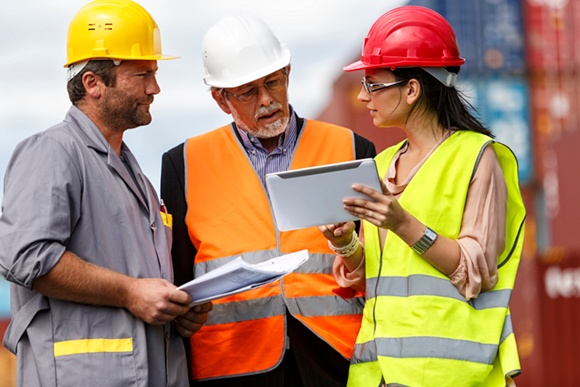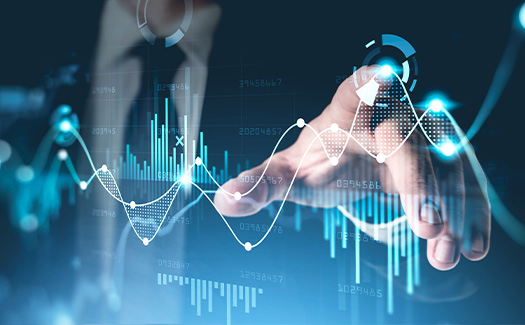Establishing an effective Environment, Health and Safety (EHS) program is essential to protecting your workers and fostering a proactive approach to preventing hazards in the workplace. Injuries, illnesses and other incidents can impact the wellbeing of your employees, disrupt your business operations and potentially cause reputational damage.
Not only that, but failure to implement proper EHS initiatives can result in costly claims that can take a long time to settle. When considering workers’ compensation claims in particular, a study conducted in Ohio found that employers that adopted EHS best practices experienced:
- 52% decrease in the average number of claims
- 80% decrease in the average cost per claim
- 87% decrease in the average lost time per claim
In addition to creating a safer environment for workers, these organizations can reduce the time and costs associated with claims arising from workplace incidents.
While it’s certainly important to respond to incidents promptly when they occur, it’s preferable to prevent them from happening in the first place. With a formal EHS program and the right technology, risk and safety managers can collaborate with other colleagues to gather the necessary data, enhance communication and minimize the frequency and severity of future incidents.
With an integrated risk management system, organizations can implement these 6 best practices from OSHA for hazard identification and assessment:
- Collect and review information on current or potential hazards in the workplace.
You likely already have a vast array of information available on current conditions in the workplace. This could include records from previous incidents, such as OSHA 300 and 301 logs, workers’ compensation records and reports, inspection reports from insurance carriers, exposure monitoring results, and input from workers in the form of surveys or minutes from safety meetings.
By logging and tracking all of this information in a centralized risk management system, you can assess the existing hazards in your workplace and streamline the processes for making improvements.
- Conduct safety inspections to identify new or recurring hazards.As workplace operations change over time, new hazards can evolve that need attention. Regular safety inspections of equipment, facilities and work areas can help identify hazards before they cause incidents.
With mobile data intake, you can conduct safety inspections accurately and efficiently by documenting each area directly from the field. Safety inspectors can upload photos or videos of problem areas in addition to inputting written observations. You can also design custom forms for each type of inspection to ensure that all relevant data is collected properly.
- Investigate incidents to determine the underlying hazards and pinpoint areas for improvement.
When incidents occur in the workplace, it’s crucial to investigate them thoroughly and identify the root causes to prevent future occurrences. With a safety management solution, you can conduct root cause analysis from start to finish in a central system. This approach eliminates data silos and can help you make definitive links between incidents and the underlying contributing factors. You can also create and track completion of corrective actions and recommendations related to investigations, with the ability to send automated alerts for certain criteria. By streamlining these processes, you can be more efficient and comprehensive when investigating incidents and prevent future hazards.
- Identify trends in reported injuries, illnesses and hazards.
Patterns of frequently occurring incidents can often be difficult to determine if data is siloed in different systems and formats. By integrating data sources in a system with advanced analytics and reporting capabilities, you can uncover hidden insights and easily identify trends in reported incidents.
Geospatial analytics can be especially helpful in this case, allowing you to overlay your incident data on maps with each of your property locations. With intuitive visualizations, you can showcase your findings to other stakeholders in consistent formats that are easy to interpret.
- Consider outliers associated with emergencies or unique situations.
While it’s important to identify hazards that could arise when performing standard tasks, many hazards can occur in emergency or non-routine situations. Emergency scenarios could include chemical spills, fires and explosions, structural collapse, weather emergencies and natural disasters, disease outbreaks and other medical emergencies, and more. Hazards can also appear when performing non-routine tasks, like performing infrequent maintenance or assessing equipment failures.
Plans need to be in place to respond to such hazards promptly and appropriately. With a risk management system, organizations can have real-time access to incident data and be in a better position to respond quickly. Field users can report incidents immediately using mobile devices, reducing delays between when an incident occurs and when the response team becomes aware of it. Having survey-style forms already created for use during emergencies can ensure accurate data entry even in stressful situations. Risk and safety teams can also analyze emergency scenarios to prevent them from recurring.
- Assess the severity and likelihood of incidents that could arise for each hazard.
When multiple hazards are present, it’s important to evaluate each hazard and determine the severity of potential outcomes, the likelihood that an event will occur and the number of workers who could be impacted. With this information, you can prioritize the hazards that present the greatest risk and put measures in place quickly to protect your employees.
With predictive analytics, you can move beyond reporting past incidents and start predicting when future incidents will occur. Analytics can provide unbiased results and clear indications of where you should focus your attention to prevent incidents before they happen.
Implementing EHS best practices requires comprehensive collection, analysis and distribution of data. With a modern risk management system, you can establish a proactive safety culture and drive improvements throughout your organization.

https://www.osha.gov/safety-management/hazard-Identification











